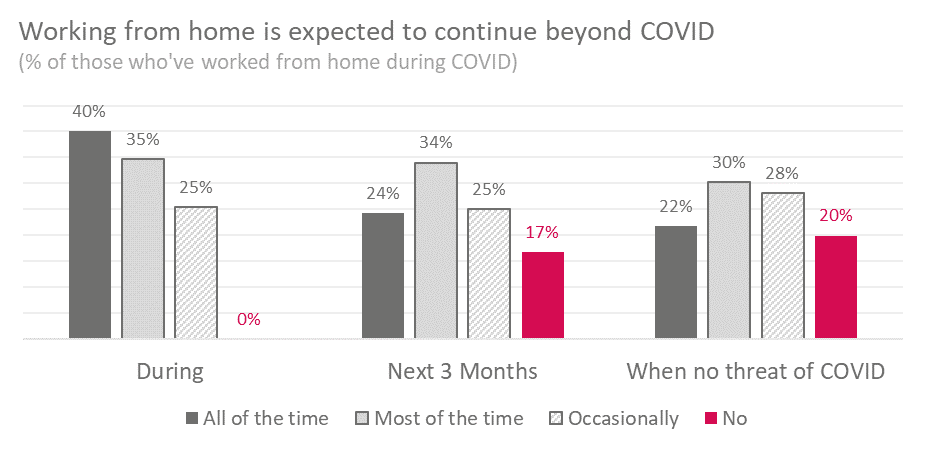Working from home is here to stay
April 2022
This research is from The Audience Agency's nationwide longitudinal (ongoing) panel survey of changing views about participating in creative and cultural activities through the recent and ongoing crises, and beyond, the Cultural Participation Monitor.
Contents
Themes
Working from home is still prevalent, preferred and expected to continue in to some degree for most, which is likely a contributor to the widespread intention to attend more locally in future than before the pandemic.
Preferences and expectations
For those that have worked from home, a quarter expect to do so all of the time over the next 3 months and over half expect to at least occasionally .
- Half of those surveyed expect to do it at least most of the time even when there’s no threat from Covid-19.
- Two-thirds of people prefer working from home most or all of the time, and only 9% never prefer it.
- Three-quarters of people worked from home more during the pandemic, but this was lower in the youngest and oldest age categories.

Attitudes to Covid-19 align with work habits
- Those who say they are not comfortable attending events because of Covid-19 are much more likely to say they will continue working from home.
- Similarly, those who think we should do everything we can to reduce COVID-19 are more likely to say they’ll continue working from home and that they prefer it, compared to those saying we should just live with Covid-19.
Persistence of localism
Even among these more cautious groups though, taking attending live performance as an example, 1/3 people expect to attend closer to home then pre-pandemic,
- This is many more than say they will travel further than they used to, and likely a result of work/life balances becoming more home-oriented.
- This trend towards increased local attendance and away from greater travel to cultural events holds across most art forms.
- Nearly 30% of people say that they have discovered new cultural things to do in their local area that they didn’t know about before Covid-19, indicating that awareness about engaging with the arts locally (and therefore likelihood to do so) is very much on the rise.
Other findings from Wave 6 | Apr 2022 | Shifts, outdoors, working from home, cost of living
-
Willingness to attend events, especially outdoors, is rising
Overall there is much increased willingness to attend events and optimism about future attendance, though some groups continue to be especially concerned, with disabled people less likely to be willing or able to attend.
-
Nearly half of people engaged with arts and culture digitally during the pandemic
Nearly half of people say that they engaged with arts and culture online in some form during the pandemic, weighted towards audiences who are younger, typically high cultural engagers anyway, or disabled.
-
Support for Covid-19 safety measures is starting to ebb
Safety measures are rated as less important than they have been previously, but desire for them continues, with half of audiences still saying that they would not attend if precautions were removed all together.
